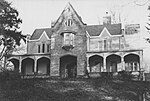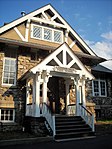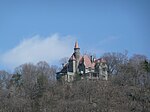Balding Avenue Historic District
Buildings and structures in Poughkeepsie, New YorkHistoric districts in Dutchess County, New YorkHistoric districts on the National Register of Historic Places in New York (state)NRHP infobox with nocatNational Register of Historic Places in Poughkeepsie, New York

The Balding Avenue Historic District is located along the street of the same name, between Mansion and Marshall streets, in Poughkeepsie, New York, United States. These four acres (1.6 ha) include 27 houses mostly built in the late 19th century. Unlike some of the city's other residential historic districts, Balding Avenue was a middle class neighborhood, and its houses still reflect that. It was listed on the National Register of Historic Places in 1982.
Excerpt from the Wikipedia article Balding Avenue Historic District (License: CC BY-SA 3.0, Authors, Images).Balding Avenue Historic District
(old map guess),
Geographical coordinates (GPS) Address Nearby Places Show on map
Geographical coordinates (GPS)
| Latitude | Longitude |
|---|---|
| N 41.374722222222 ° | E -73.926388888889 ° |
Address
Garrison School Forest
(old map guess)
10524
New York, United States
Open on Google Maps









